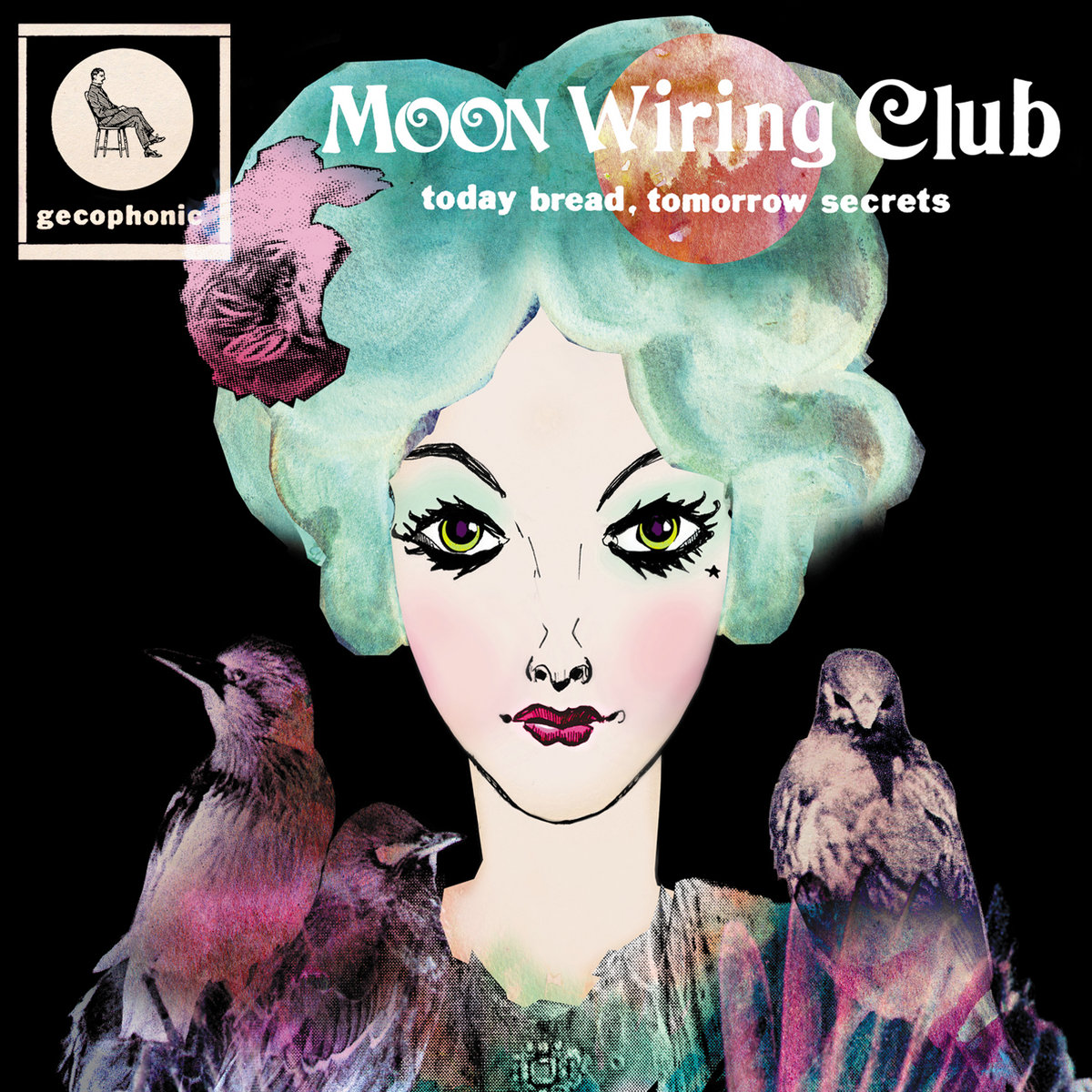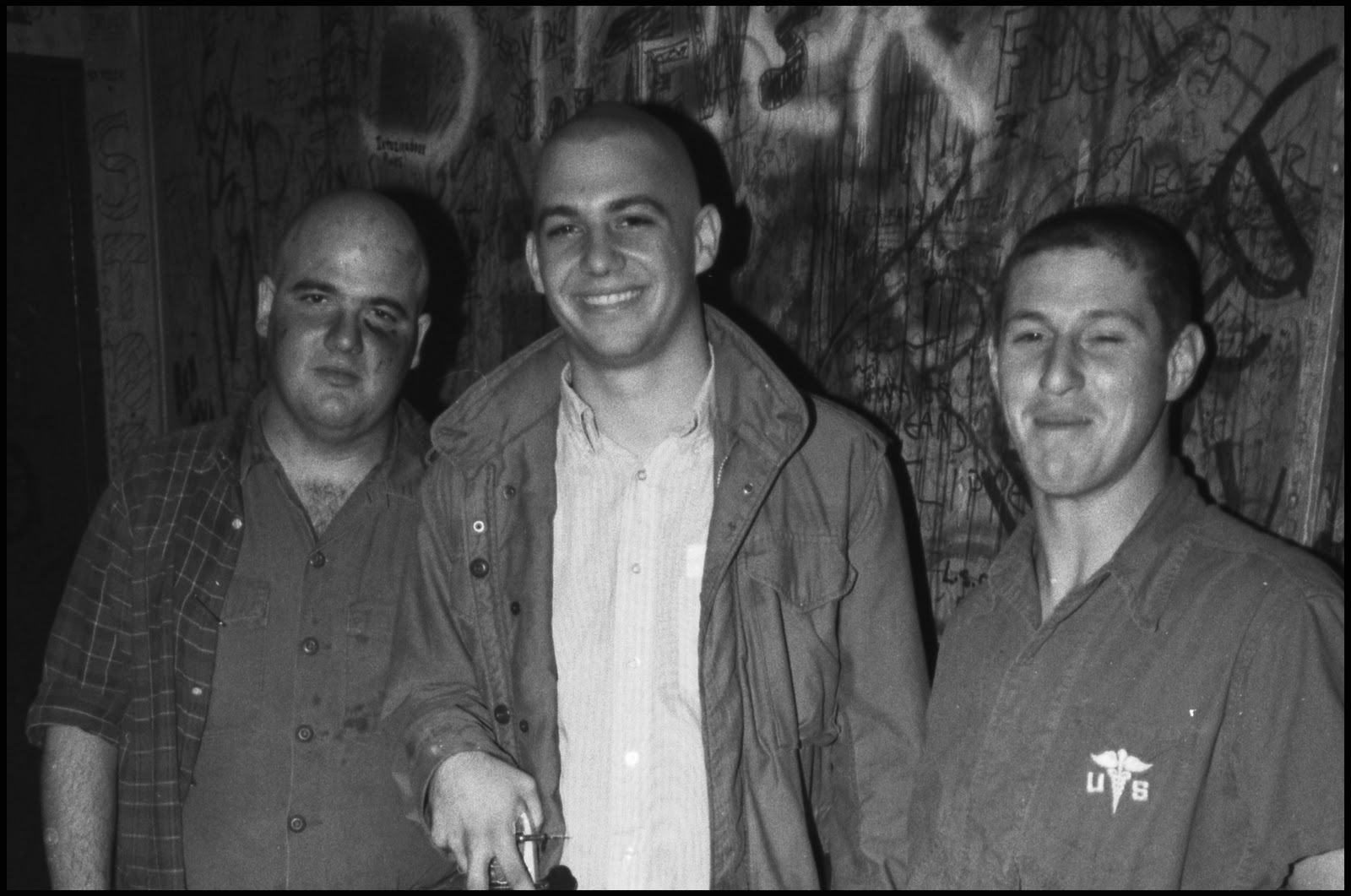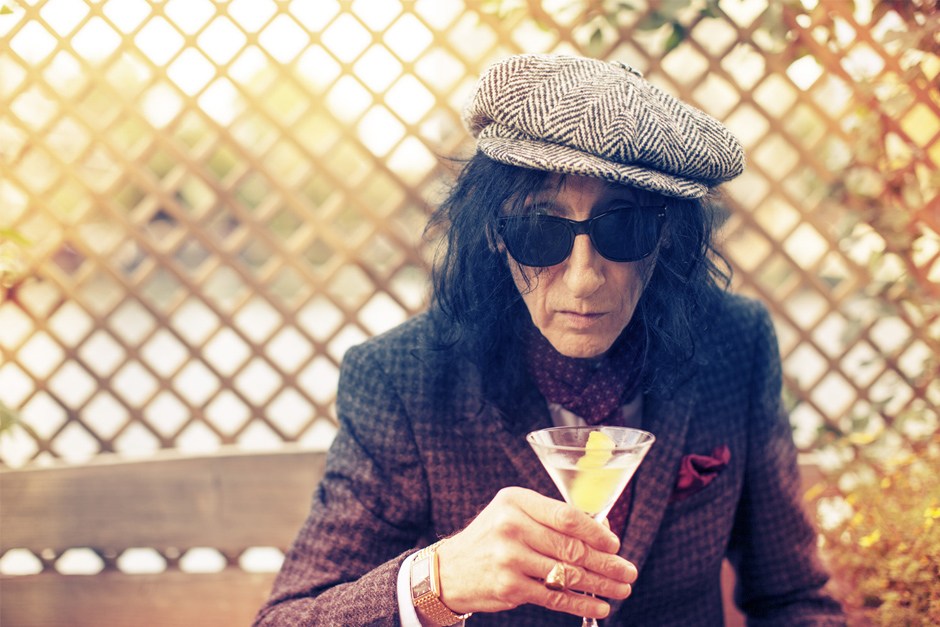For a decade that Ian Hodgson, aka Moon Wiring Club, is making the most exciting music of the 21st century. Hypnagogic electronic music and a graphic world of great imagination. Above all, he speaks to us for La Zancadilla.
First of all ~ what is Clinkskell? A loved concept of utopian Edwardian England?
That would be telling. :
Some time ago you said that the reason for starting to recreate Clinkskell came from your taste for drawing women with hats. But there will be some more reason, right?
Yes, it was more to do with the Fine Art degree I’d undertaken (1995-1998) ~ I’d enjoyed it, but found the (necessary) academic structuring of it favoured certain ways of thinking. You’d be so caught up in applying your creative work to be relevant within the prevailing artistic movements (postmodernism etc) that it could stifle true artistic intentions / inspirations. These sorts of things are obviously very subjective, and of course many folk readily applied and engaged with the principles of postmodernity, but around 2000 I came to the conclusion that the creation of a world where ‘vaguely aristocratic Victorian / Edwardian women in fancy hats create unusual electrical devices’ influenced by the style of say, Arthur Rackham, was what I wanted to do rather than (for example) the fairly obvious proposal ~ ‘degradation of film images over time = loss of memory’. I wouldn’t want this to sound like I’m against academic artistic learning though, I really benefited from certain aspects of what was taught, and maybe having something to react against is as strong a creative impulse than anything else.
Clinkskell is a world of foxes, owls, cats, and woodland creatures of all varieties. I think there’s a connection between this kind of creature and a kid’s world seen by adult eyes. Is it?
For myself, I don’t really feel like I’ve altered my perspective from childhood that much. Obviously some things change, but I’ve always liked the image of mice in a tangle of bramble bushes, foxes wandering town streets at night or an owl in a top hat and evening jacket spying at you in the moonlight. Those sorts of images don’t go away, but perhaps I’ve not done the things that may drive them out ~ move to the city and get a high-powered job in finance or property development. 🙂
In some ways, Clinkskell Reminds me of Brian Talbot’s “Heart of Empire”and “Alice in Sunderland”’s comics. Overall in that futuristic or a dreamlike vision of Edwardian age. There’s some kind of this perspective in your drawings for Clinkskell?
Thanks! I’m a big fan of Brian Talbot, especially ‘Heart of Empire’ which is one of my favourite comics. Folks sometimes mention ‘The League of Extraordinary Gentlemen’ as a MWC inspiration (which it certainly is ~ a big favourite of mine too) but I’d say ‘Heart of Empire’ was more the aesthetic I had in mind, partially because (thinking about it) Brain Talbot lives not that far from me, and there is a definite Northern English sensibility to his work.
Moon Wiring Club is a world with a great resonance between music and narrative. More than completing the musical experience I see your drawings and clips like a derivation of your music. Are there any Clinkskell’s pictures or drawings that have made you compose the music?
Not really, I tend to have a general album concept / story in mind (EG ~ Leporine theme park in the grounds of a stately home) then compose the music to fit this concept. While the music is being physically created, my mind drifts off to form the artwork and characters that will take part in the story. If I’m getting a bit lost with a piece of music (or need a break from composing) I’ll start drawing, but on the whole the artwork comes after the music, as I need to populate the story with protagonists. Perhaps it’s a bit like casting a play or TV programme after the script has been written.
Which are your principal drawing influences?
My principal drawing influences come from fashion photography and illustration. I’ve always collected magazine and newspaper articles, especially things like the fashion articles in glossy Sunday newspaper supplements, which would often feature Vogue retrospectives or articles on Mary Quant (for example). Rather than just focusing on the clothes (which I love), fashion photography obviously features models who generally adopt an impassive, aloof pose, with the style of the clothes often in contrast to the background in which they are situated ~ ruined buildings, the middle of a field, playing croquet inside a house etc. I suppose one aspect of the MWC ‘style’ is my love for a genre I have no real connection to.
In terms of individuals ~ Jill McDonald (who did a lot of the 1960/70s Puffin Post illustrations), Racey Helps (my favourite) Alan Aldridge, Julie Verhoeven, Bernard Lodge, Tove Jansson, Richard Dadd, Brain Froud, the painter Marion Adams (specifically her work in Manchester City Art Gallery), Thea Porter, Barbara Hulanicki, Tommy Roberts, John Atkinson Grimshaw (for the sublime mood) etc, etc
What are the characters of Clinkskell that have motivated you most when it comes to giving shape to your drawings and covers?
Mademoiselle Marionette, Sylvia Mogg and Osram Brown are primary characters. They may not always feature on the artwork of a new album, but their influence or motivations generally do influence the scheme of things. As a stage magician Mademoiselle Marionette would be quite elaborate and long-sighted in her machinations, and she was the overriding image of the recent WANTCOIDAOO compilation. Sylvia Mogg is featured on the cover of ‘Striped Paint for the Last Post’ and is more of an intuitive adventurer / explorer archetype with amazing hair, I see her cropping up in the background of all sorts of unusual places. Osram Brown is more a primordial, Northern English force or entity. A bit like a gatekeeper or groundsman.
More recently I’ve become impressed with Gwen Crick, who is an ‘Agatha Christie’ style author of genre fiction with a supernatural twist. She may or may not be a disembodied portrait of herself and could well crop up in further MWC offerings.
On MWC’s world even there’s a computer game, a game card and a board game. All the kind of things made for entertainment. But what is the real reason for expanding the universe of Moon Wiring Club in this way?
I think with the modern way of consuming a new album, you generally get a month of pre-release information and then a ‘single-image’ release which could equally be consumed just as a download. There’s nothing wrong with this, and certainly some releases benefit from this format, but I personally like the idea of an album spreading all over the place, across the table over the settee and into all the fixtures and fittings. (like a split cup of tea). If you’ve kindly bought a new MWC cd and you are reading the booklet while you have your first listen, you might get distracted by (for example) elaborate illustrations that detail an old computer game. Maybe you’ll then start to think of 1980s educational computer games while you listen, and perhaps the nature of the music (instrumental with occasional vocal elements) carries you off into a different sphere than you had at first assumed, due to these possibilities of further immersion coaxing you off-guard. It’s about suggesting other possibilities, opening a space to dream.
Some of my favourite moments in life have been when listening to music whist reading a book, and how the different elements synchronise in a magically serendipitous way. Or when you’re driving on the motorway at night and a piece of music elegantly soundtracks the moving landscape. In providing more than just the music, I think it allows the possibility of these kind of events happening. Perhaps a bit like sleight-of-hand.
For ‘Leporine Pleasure Gardens’ you said that your initial idea was to create something almost only conceived with a lot of samples collected of human voices. When I hear your music, and I hear those voices, I usually think that you’re giving voice to the voices lost in time of your creations. Is there an intention beyond the musical in all this?
I’ve always loved hearing vocal samples in music, but they would always tend to be American (generally Science Fiction film) voices. Nothing wrong with that, but from the very first moment I wanted to make music I knew I wanted to have English (or occasionally European) voices to accompany the music. I think if you apply a bit of thought to these voices they start to provide their own narrative outside of their initial context over the course of an album. More than just a recontextualization, it can feel like a ‘third party’ is involved with the music. Something contained begins to be spoken.
In your videoclips, like ‘Into the Chattering Ground’, ‘Melt it Down’, the images remind me of a kind of psychophonic vision. Like a nightmare that wants to come true. What method do you use when you’re recording a video clip like ‘Walking Through Me’?
The style of the music videos came about out of necessity. When I started, my computer didn’t have the memory capacity to handle moving images, so it was really just using still images and sequencing them together in a fairly crude manner. Then I figured out how to incorporate moving images, but only very short (10 second) clips which were edited together in basic movie-editing software. Most of the clips come from my collection of archive television, and are quite often poor-quality ‘bootleg’ recordings.
For ‘Walking Through Me’ everything from the source material gets fed through a VHS player and manually distorted (scrunching the tape). This is then transferred from the VHS player and re-edited in the same basic software, a few filters are applied, and then the video is burnt onto a DVDr, and fed once again through the VHS player. The end result is then recorded directly from the VHS player for a final time, and tweaked slightly to remove frames where the video tracking has overloaded, and to include the proper audio. Very time-consuming, but this application of processes is what gives the later MWC videos a certain lovely hazy glow I don’t think you can obtain in any other way.
‘Into the Chattering Ground’ was slightly different as I used basic animation software to create the source material from my own illustrations. It took months to do but I was pleased with the end result.
PD: esta es una versión extendida, sin cortes, de la entrevista que realicé para O Estudio Creativo en febrero de 2017.




